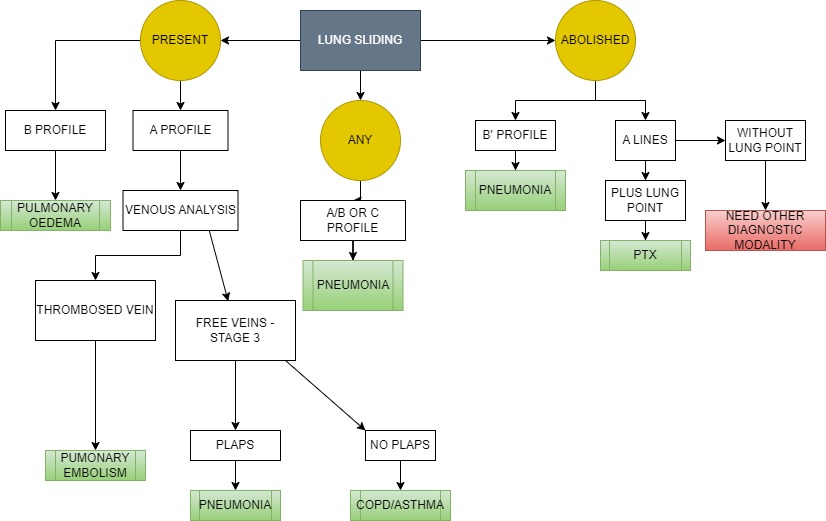8 The BLUE Protocol in Lung Ultrasound
Fairrul Kadir
Introduction to the BLUE Protocol
The Bedside Lung Ultrasound in Emergency (BLUE) protocol is a systematic approach to diagnosing respiratory failure using lung ultrasound (LUS). Developed by Dr. Daniel Lichtenstein in 2008, it revolutionizes the rapid assessment and management of patients presenting with acute respiratory failure. The BLUE protocol employs specific LUS findings to differentiate between several respiratory conditions with high accuracy.
- Principles of the BLUE Protocol
- Rapid Assessment: The BLUE protocol is designed for a quick (typically under 3 minutes) bedside assessment, which is crucial in emergency and critical care settings.
- Standardized Points of Examination: It involves scanning standardized points on the chest, including the upper and lower anterior chest and lateral chest on both sides.
- Lung Ultrasound Artifacts: The protocol relies on identifying specific ultrasound artefacts like A-lines, B-lines, lung sliding, and lung consolidation.
- Algorithmic Approach: The BLUE protocol uses an algorithmic approach to interpret these findings, correlating them with clinical symptoms to diagnose pneumothorax, pulmonary edema, COPD, asthma, and pneumonia.
- Application of the BLUE Protocol
BLUE protocol is useful in a patient with acute dyspnea. This is because there is a wide array of diagnosis that will come with the symptom of acute dyspnea or breathlessness. BLUE protocol helps with this algorithm below.

The BLUE protocol is valuable for rapidly diagnosing acute respiratory failure in emergency and critical care. Its main advantages include quick and accurate diagnoses, non-invasiveness, and ease of use after appropriate training. This makes it particularly beneficial in urgent care settings and safe for all patients. However, the protocol’s effectiveness is highly dependent on the operator’s skill, and it should be used as part of a comprehensive clinical assessment, not in isolation. Looking ahead, the potential integration of the BLUE protocol with other diagnostic methods and ongoing research could enhance its accuracy and expand its applications. As lung ultrasound technology and training evolve, the BLUE protocol’s significance in emergency care is expected to increase.
BLUE protocol is discussed extensively in a lot of papers and is not covered in the context of this textbook.

